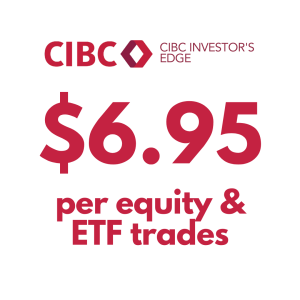
When it comes to investments, there are loads of options to consider and choose from. While some investors want streamlined investments, others wish for a diverse portfolio. This is where the US Bond ETFs come in as one of the myriad options in the market. There are a ton of Canadian ETF options out there, but you may want to expand into the US market as well. By doing so, you’ll gain exposure to another North American market thereby diversifying the geographical risk in your investments. Continue reading to learn more about the US Bond ETF, how they work and the best investments available on the market!

Table of contents
What is a US Bond ETF?
“ETF” in the term “US Bond ETF” is short for exchange-traded fund. An ETF is a type of fund that is traded publicly on a stock exchange. Money from many investors is pooled and invested into assets. The other half of the term is bond. A bond is a type of equity that a government or corporation offers to raise capital without giving up shares in the entity. When put together, US Bond ETF refers to a specific type of ETF investment that deals with US bonds.
US Bond ETFs are some of the fastest-growing asset categories available on the market. According to NASDAQ, 2020 was a record-breaking year for US Bond ETFs. These ETFs generated about $168 billion in that year alone. Plus, the high liquidity allows investors to trade their investments in times of distress. Thus, making it a profitable investment option.
As the name suggests, US Bond ETFs hold a collection of US bonds. Some examples include corporate, US treasury, floating-rate bonds, and so on. Depending on the bonds in question, they have different yield periods. These are often categorized into short or long-term.
Those invested in US Bond ETFs usually get a monthly dividend payout and annual capital gains. If invested within a tax-sheltered account, such as a TFSA or RRSP, all investment income is free of tax. However, if the investments are held in a non-registered account, you may owe foreign investment or capital gains tax.
CIBC Investor’s Line Offer
Up to $6.95 per online stock or ETF trade. Plus, there’s no minimum account balance.
Can a Canadian buy US Bond ETFs?
Most Canadians who are interested in foreign bond investments look towards ETFs. This is because they are a low-cost investment and an easy work around to accessing foreign markets. Another reason is that most US Bond ETFs are CAD-hedged to help control currency risks. This means investors do not have to worry about exchange rates or currency conversion. But, with unhedged ETFs, the currency risk still exists. The effect is that investors with a CAD account balance must convert their money first, usually through a currency conversion. This will then enable them to facilitate the purchase of US Bond ETFs and other foreign currency investments. The downside is that this conversion is not free. Most brokers will charge a conversion fee for the service, unless you use Norbert’s Gambit.
In summary, yes, Canadians can buy US Bond ETFs. The only limitation is currency and having an account that can access the US stock market. However, it is relatively easy to work around these limitations as many Canadians choose to invest in the US economy.
Related Reading: Bond ETF vs Stock ETF: Which is better?
Can a Canadian buy US treasury bonds?
A treasury bond is a government bond offered by the United States government. The Canadian equivalent would be the Canada Savings Bond. It is relatively easy for Canadians to purchase bonds sold by Canadian entities. But what about Canadians buying US bonds?
There has been a recent dip in the bond market, perhaps due to an impending recession. However, financial experts predict that things will look up soon. It is hardly surprising that the question of whether Canadians can buy US Treasury bonds comes up. The reason is that these treasury bonds are some of the best-performing bonds. They are also one of the most secure financial investments in the market.
US citizens normally buy treasury bonds directly from the official website. Unfortunately, Canadians are not allowed to participate in this type of direct sale. Instead, an interested Canadian investor has two alternative options if they wish to invest in treasury bonds.
The first is to buy bonds on the secondary market through a brokerage company. These brokerage companies typically offer potential investors a range of treasury investments. Investors will then have to pay a low commission for every trade in exchange for these services. Another way is indirectly through the US Bond ETFs, which we will discuss in next. Continue reading to learn more!
Related Reading: Types of ETFs in Canada
Best US Bond ETFs
If you are interested in the best US Bond ETFs to get started with, here are a few recommendations:
| Stock Ticker | Management Expense Ratio (MER) | Assets Under Management (AUM) | Percentage Invested in US Bonds |
| BND | 0.03% | $316B | 67.1% |
| TBIL | 0.15% | $2.8B | 99.9% |
| IBTE | 0.07% | $2.9B | 95.24% |
| VTEB | 0.05% | $34.5B | 100% |
| BIL | 0.14% | $31.4B | 99.12% |
1. Vanguard Total Bond Market ETF (BND)
The BND is one of the best options on the market for investors looking to hold long-term at an affordable rate. This low-cost option offers investors broad exposure to the US bonds investment market. The BND holds over 10,000 corporate and government bonds, among many others. It also invests in the US treasuries and mortgage security markets. These bonds have varying levels of maturities, from short to intermediate to long-term.
Before making this investment, there are some important factors to consider. One, bonds in this ETF face the risk of fluctuating interest rates. The effect is that whenever interest rates increase, the prices of bonds in the BND will drop. As a result, its Net Asset Value (NAV) may be priced lower. You may notice this effect occurring right now with rising interest rates in the United States. Although, this risk factor is not unique to the BND alone. All bond investment funds face similar risks.
2. The US Treasury 3 Months Bill ETF (TBIL)
The TBIL exposes investors to the US 3 month treasury bills through ETFs. This makes it easier for Canadian investors to buy US treasury bills without restrictions. Unlike other security options, TBIL offers frequent monthly dividends. Transaction costs on this ETF are lower, with reduced operational burdens. These burdens arise from the frequency with which these 3-month bills are rolled out.
Note that TBIL holds only the current version of the US treasury 3-month bill. The good thing is that whenever there is a new 3-month bill, the TBIL automatically rolls it over. That way, investors do not have to re-invest in TBIL constantly. As you can see, this investment focuses on the short term bond market which experiences constant roll overs. Another advantage of TBIL is that it is very liquid and has a low-interest rate. This can be credited to its short maturity period that allows investors to earn returns in the short run.
Related Reading: Best Vanguard ETF
CIBC Investor’s Line Offer
Up to $6.95 per online stock or ETF trade. Plus, there’s no minimum account balance.
3. iShares iBonds Dec 2024 Term Treasury ETF (IBTE)
The IBTE ETF package consists of several US treasury assets, but only those with a maturity date fixed between January 1 and December 15, 2024. Investors can enjoy exposure to an extensive portfolio of bonds set to mature in a short timeframe. This investment liquidates once the clock chimes to signify the start of 2025. Then, all its assets will be paid out to its existing investors.
There are many advantages to assets with a defined maturity date, like the IBTE. The most significant is the monthly distribution. While other treasury bonds may pay semi-annual interests, IBTE makes a monthly payment. This can assist your passive income cash flow.
4. Vanguard Tax-Exempt Bonds (VTEB)
Investors in the higher tax bracket category may find few US Bond ETF options that fit their status. This means that the tax advantages available with some other bonds may mean nothing to them. As a result, tax-exempt bonds come in as a better alternative. Local governments issue certain bonds to fund their infrastructure commitments. These include building roads, erecting bridges, and much more. The government then issues specific bonds to investors over these projects. These are called municipal bonds. The income arising from these is free from federal and state taxes, with only a few exemptions.
With an ETF like the VTEB, investors can access thousands of these municipal bonds from across the US. These bonds last an average of five years and feature high credit ratings. But note that the risk of fluctuating interest rates also applies to this category of US Bond ETFs. Thus, increasing interest rates can cause the bond prices to fall. Or result in reduced income yield from the fund when the interest rates drop. Yet, investors that want tax-exempt assets and don’t mind the fluctuations that occurs with these.
5. SPDR Bloomberg 1-3 Month T-Bill ETF (BIL)
Like some of the bonds discussed above, this is another short-term investment. This package allows investors to access short-term maturity treasury bills. The BIL typically holds one to three months of maturity bonds, as the name implies. This short-term investment protects the assets from fluctuating interest. These volatile interest issues are more prevalent with long-term investments.
Inside the BIL are about 17 treasury bills with different short-term maturity periods. These investments feature low-interest rates and almost zero default risk. Investors typically get rebalanced on every last business day of the maturity month.
Related Reading: 5 Best Money Market ETFs in Canada
Is a bond ETF a good buy?
Generally speaking, the last few years were bad for bond investments. Many of the investments went down on the market due to interest rate hikes. But, when it comes to investing, highs and lows are typical and to be expected. Since then, bonds have picked up, and there is expected to be potential for better returns in the coming years.
Whether or not a US bond ETF is a good addition to your portfolio is a personal decision. Be sure to consider your risk tolerance, existing investments and financial goals. Interested Canadian investors can rely on brokerage firms to access US bond investments. These firms will also provide options to help diversify portfolios. But, it is essential to identify the risks before dabbling into these investments. This article stands as a helpful guide in that regard!
Read More: How to Buy Treasury Bills in Canada


